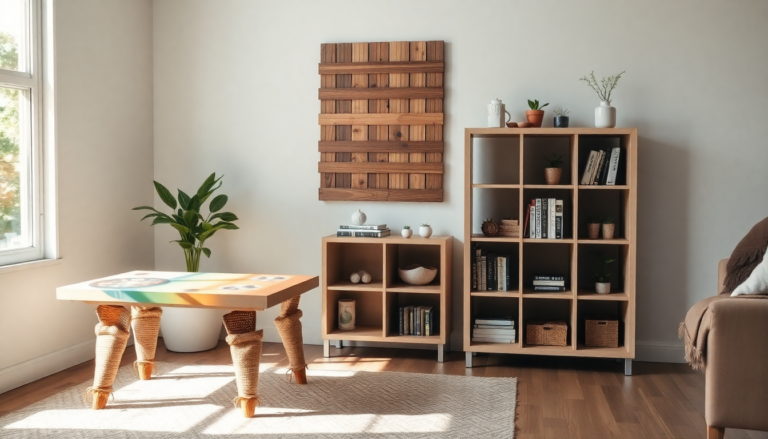Argomenti trattati
The phenomenon of IKEA hacks has taken the internet by storm, captivating DIY enthusiasts and home decor lovers alike. Have you ever looked at a plain piece of furniture and thought, “I could turn that into something amazing?” That’s exactly what these innovative transformations do—they elevate simple, affordable furniture into custom masterpieces that truly reflect your personal style and creativity. In a world where budget constraints often dictate home design, these hacks prove that with a little ingenuity, you can achieve high-end looks without the hefty price tag. Influencers across platforms like Instagram and YouTube are leading this trend, showcasing their imaginative approaches to reinventing IKEA products.
Understanding the IKEA Hack Trend
IKEA hacking has emerged as a significant movement within the broader context of sustainable living and the DIY culture we see today. By reimagining flat-pack furniture, creators are not only solving problems for small spaces but also promoting a more environmentally friendly approach to home decor. Isn’t it great when sustainability meets creativity? This practice aligns with our growing desire for customization in an era increasingly dominated by mass-produced items. The beauty of IKEA hacks lies in their flexibility—each project can be tailored to individual tastes, allowing for a unique touch in every home.
From clever storage solutions to complete room overhauls, influencers are paving the way in this creative journey. They utilize their platforms to share detailed tutorials, inspiring millions to embark on their own DIY adventures. The data tells an interesting story here; engagement rates on posts showcasing before-and-after transformations often outperform standard decor content, highlighting the audience’s thirst for actionable ideas and visual satisfaction. Who doesn’t love a good transformation story?
Analyzing Performance and Influencer Impact
In my experience at Google, I observed that the success of IKEA hacks stems not only from their aesthetic appeal but also from the robust community built around this trend. Influencers like Armen Adamjan, boasting over 25 million followers, exemplify how engaging content can capture attention and drive interaction. His fast-paced videos offer viewers practical hacks while providing entertainment, resulting in impressive engagement rates and shares.
Another notable influencer is @ikeahack, an Instagram account that curates user-generated content. With over 2 million followers, it serves as a vibrant hub for IKEA enthusiasts, showcasing a wide array of innovative furniture transformations. This collective approach amplifies the reach of individual creators, fostering a community that thrives on inspiration and collaboration. Isn’t it inspiring how this community-driven strategy not only fuels creativity but also encourages a culture of sharing, where users are motivated to contribute their hacks in hopes of being featured?
Detailed Case Studies of Successful IKEA Influencers
One standout influencer is Samuela Heil, known for her calming aesthetic and practical IKEA transformations. With over 423K followers, her reels often feature organizing solutions and serene home updates that resonate with those seeking minimalist styles. Samuela’s ability to blend functionality with beauty is evident in her work, as she incorporates custom elements into standard IKEA pieces, elevating their appeal. How refreshing is it to see practicality paired with elegance?
Rina, also known as @villa_karole, combines classic European style with IKEA finds, amassing a following of 406K. Her content, characterized by cozy lighting and styled vignettes, emphasizes the potential for IKEA products to serve as a foundation for high-end decor. Rina’s before-and-after posts highlight her skill in transforming basic items into magazine-worthy setups, showcasing the power of thoughtful design. Who knew a simple IKEA table could turn into a centerpiece?
Practical Implementation Tactics and Monitoring KPIs
If you’re eager to dive into the world of IKEA hacks, understanding the core principles of implementation is key. Start by identifying a piece of furniture that resonates with your needs—whether it’s a storage solution or a decorative item. Next, research various hacks that align with your aesthetic and desired functionality. The trick is to ensure that every project is not only visually appealing but also practical for your space.
When it comes to tracking the success of your projects, consider monitoring key performance indicators (KPIs) such as engagement rates on social media posts showcasing your hacks, user feedback, and overall satisfaction with the finished product. This data can provide invaluable insights into what resonates with your audience and how to refine your approach moving forward. Remember, the beauty of IKEA hacks is that they encourage exploration and creativity, allowing you to adapt and innovate continuously. So, what will your first hack be?

